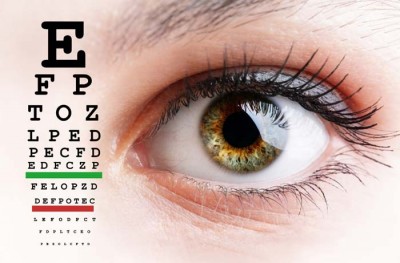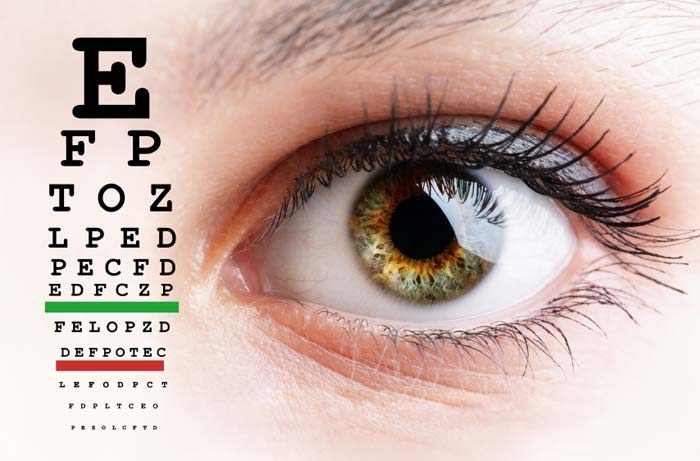- 0.0 Rating
- 1152 Reads
- Discuss
Diagnosis and treatment of congenital astigmatism
CONTENTS:
- What is astigmatism and what is it caused by
- How to diagnose
- How to stop the pathology
- Additional recommendations
Acquired or congenital astigmatism in children is quite common. It is important to pay attention to the unusual behavior of the child and see a specialist in time. He will help to prevent progression of the disease, prescribe necessary therapy.
WHAT IS ASTIGMATISM AND WHAT IS IT CAUSED BY
Различают следующие формы заболевания: Astigmatism (congenital or acquired) is a pathology of the eye cornea or the lens curvature. The child sees the surrounding objects vaguely, outlines are curved. In the growing process the reality misperception can be formed in children. Sight disorder not only causes discomfort, but also leads to delays of mental development. The development of congenital astigmatism in a baby begins from the first day or during the first year of life.
There are the following forms of the disease:
- simple, when kid’s one eye is shortsighted or longsighted;
- complex, when both eyes have disorders;
- mixed, when one eye is myopic and the other one is longsighted
The degree of congenital anomaly can be weak (with up to three units of diopters), medium (up to six units) and strong (with diopter more than six units). The deviation from the normal when diopter code is not more than one is very rare. This is called physiological astigmatism.
Usually, the reason of its occurrence is the uneven growth of the eyeball cells. It results in a slight deformation of the cornea. The physiological pathology doesn’t progress practically and is easily treated. All other types of congenital or acquired disorders of the cornea cover are pathological. Depending on the extent of the disease it requires more time to eliminate the cause or to stop the process of progressive deterioration of vision.
Causes of congenital astigmatism can be the following:
- Heredity.
- Pathology of the jaws development.
- Albinism.
- Alcohol intoxication of the fetus.
- Congenital retinitis pigmentosa.
HOW TO DIAGNOSE
Till one year age it is practically impossible to identify the astigmatism without special surveys. During this period, the baby may experience frequent redness of the eyes whites, running eyes. Later signs get more obvious. Baby bumps into furniture, doors, puts toys by shelves, squints while examining something. After three years, it is difficult to read, he complains about frequent pain in the eyes, headache, dizziness.
To determine the cause of all these manifestations and in the case of astigmatism to act in time, you need to prevent disease development since baby age, consulting with pediatric ophthalmology. Congenital astigmatism can be diagnosed since three months age. If the ophthalmologist suspects presence of cornea or lens development disorder, he prescribes special drops. Eye reaction helps to diagnose.
Till one year these children are under doctor’s supervision, then the treatment starts. When a kids begins to walk, diagnostics is performed by autorefractometry, and the degree of the cornea deformation - with the help of a computer keratometry or topography. In older children, the presence of the pathology is detected using a special table. Visual acuity is determined by the selection of cylindrical lenses.
HOW TO STOP THE PATHOLOGY
Astigmatism progression leads to dysfunction of the entire visual system, and in visual centers of the brain.
In congenital disease in children less than one year, vision is gradually worsening. In the future, this process slows down or even stops. But in any case it is necessary to treat astigmatism. Otherwise, strabismus or amblyopia may develop.
Treatment is carried out by means of:
- Special cylindrical glasses;
- special day lenses;
- rigid night lenses;
- laser correction.
Glasses and lenses should be worn continuously without removing during the day. Rigid lenses are used at night, when the diopter is not more than one. They are put on before going to bed and slept with. At night, when the child is asleep and his body is relaxed, the lens slightly presses on the cornea and gradually eliminates it. Vision is restored. Vision correction by laser is allowed only since 18 years.
ADDITIONAL RECOMENDATIONS
Even during intensive treatment special conditions need to be created for children to observe the effect of vision recovery or cessation of astigmatism progression. If the kid is straining eyes, draws or reads, you need to take a break periodically for 10-20 minutes. You can look out of the window or just sit with your eyes closed.
Kid’s workplace should be as lit as possible. During the day it would be enough if the table where the kid sits will be lit with natural sunlight. In the evening, it is necessary to light a powerful desk lamp. It is necessary to do gymnastics for eyes with the baby, at least once a day, to teach him to massage the eyelids. This massage perfectly relaxes tired muscles of the eyes. You can carry out color therapy.
Related items
Whether those first to share your opinion with others.


